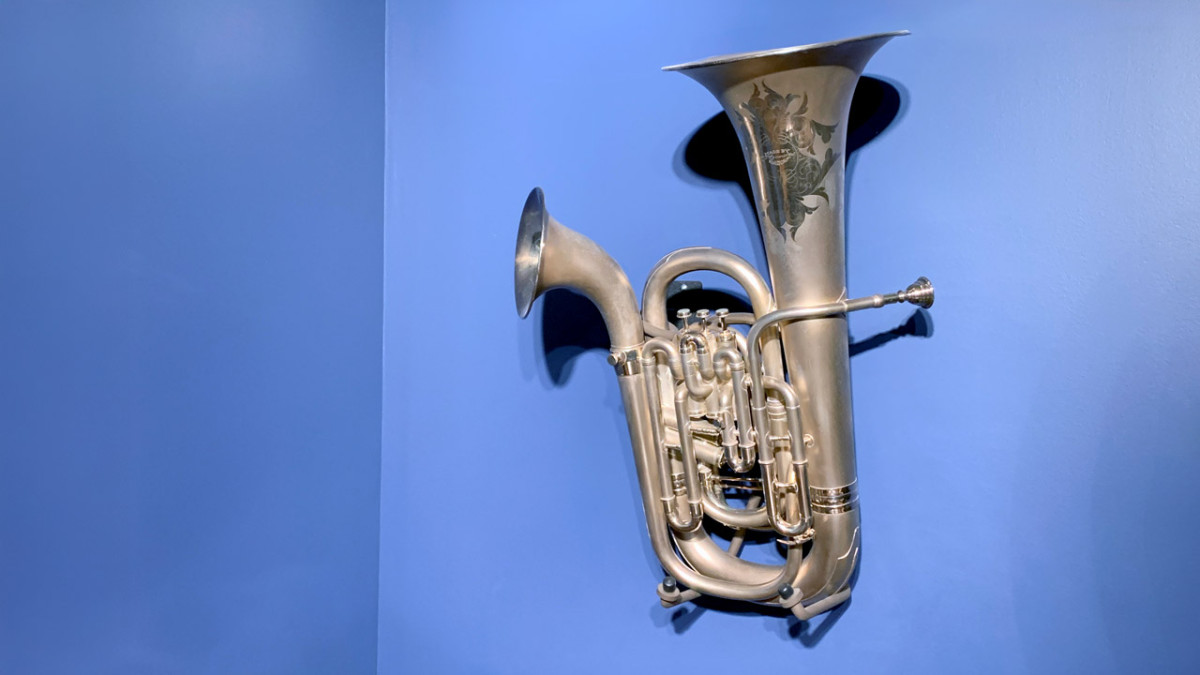
1917 C.G. Conn Double-Bell Euphonium
The Museum of Making Music proudly showcases a remarkable 1917 C.G. Conn Double-Bell Euphonium, a testament to innovative brass instrument design from the early 20th century. We’ve chosen to highlight this instrument as part of our 25th anniversary celebration—after all, silver anniversary—silver instruments! What better way to celebrate our history than with an iconic brass piece that reflects both the ingenuity of its era and the enduring appeal of brass music?
This unique instrument, whose name is derived from the ancient Greek word euphōnos meaning "sweet sounding," features two bells: a larger primary bell that delivers the traditional warm, mellow tones characteristic of a standard euphonium, and a smaller secondary bell that produces a brighter, more focused sound akin to a baritone horn or valve trombone. A specialized valve mechanism allows the musician to switch airflow between the two bells, enabling dynamic contrasts and special effects during performances.
The double-bell euphonium emerged in the 1880s, with C.G. Conn leading its production in the United States. While it enjoyed popularity into the early 20th century, production ceased around 1960 due to a variety of reasons including changes in musical preferences and a lack of practicality in its usage.
For a closer look at this fascinating instrument, click here to watch the Museum of Making Music's detailed exploration.
Watch the accompanying video for a closer look at this fascinating instrument.

